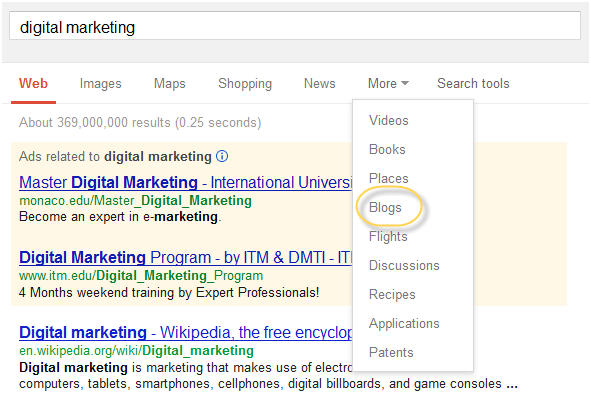An Exhaustive Guide to Exceptional Guest Blogging

There are few shortcuts to great SEO in the post-Panda update era. While quality content, and a powerful social media strategy are key to earning higher organic search rankings, your website can’t gain authority overnight. Or can it?
Guest blogging is a remarkable tool for earning backlinks to your company’s website, a component that Google and other major search engines use heavily to determine the rank of your content. Not fully convinced that a high search ranking matters?
Consider the following facts:
- 93% of online experiences begin with a search engine.
- 70-80% of consumers ignore paid ads, and focus on search engine results.
- SEO leads have a 14.6% close rate.
Earning and maintaining a position at the top of Google isn’t just critical for your brand to gain exposure, it can be crucial to survival. We’re about to clue you into one of the best-kept secrets in modern SEO: guest blogging.
What is Guest Blogging?
Guest posting is the process of writing content for website that isn’t owned or operated by you. Often, brands will receive a link back to their website in exchange for the free content they provided the blog. As Wayne Barker of Search Engine People puts it, everyone wins when a guest blog exchange is successfully executed: you gain positive SEO and exposure to a new audience, the blog benefits from a fresh voice, and readers can enjoy a new perspective. Here are the primary benefits to your website from guest blog posts exchange:
- Better Visibility
- Referral Traffic
- Improved Backlinks
How to Find Websites for Guest Blog Posts
It’s critical for marketers to remember that Google’s webspam team is in the business of ensuring that consumers are able to find answers to their questions. Simply pitching guest blog posts to any website willing to accept free content won’t get you very far, as Matt Cutts explains in this video:
In essence, your guest blog posts should follow guidelines for content quality. As SEO expert Pratik Dholakiya puts it, “look for platforms where it will make sense for your readers for you to post.”
Here are some more specifics for finding the right sites:
1. Find Sites in Your Niche
Don’t just google “guest posts.” Network with other bloggers in your industry to discover websites with a similar commitment to quality, and an audience that can benefit from your message. Well-regarded listings of top blogs in your industry, like the Adage 150, can provide a starting point for accessing quality websites. Alternatively, search industry-specific keywords, and sort the search results to filter for blogs:

2. Check Website Authority
Domain Authority and Google PageRank act as snapshots of a website’s perceived authority in the eyes of search engines. Identifying blogs with a similar, or higher, authority to your own can protect you from negative SEO.
3. Vet Engagement
If a website lacks an engaged audience, your content won’t result in referral traffic or social media shares. Use blog comments, subscribers, and Facebook and Twitter engagement as a barometer.
4. Consider Their Blogging Standards
Websites with a continual commitment to delivering high-quality content will often have thoughtful, and detailed guest blogging guidelines in place. If no rules are stated on the site, it isn’t necessarily a red flag, but it can indicate they’re less-picky about posts.
5. Scope Out the User Experience
As Dholakiya points out, a user-friendly web interface is increasingly important to positive SEO. Ensure blogs you’re considering pitching a guest blog post to are designed for an optimal experience.
If websites lack a clearly-defined audience, tone, or focus, it could be an indicator that they don’t have a sufficiently-engaged audience to benefit your brand through a guest post.
Pitching the Perfect Guest Blog
Once you’ve answered the basic question of “what is guest blogging,” and identified a list of websites to target, it’s time to send some pitches. Remember, the top bloggers in major industries likely receive hundreds of offers for guest content daily. Do your research on the website thoroughly before you sit down to type an email, to ensure you have a solid grasp of the website’s approach, topics and audience.
- Pitch Multiple Ideas: You have no way of knowing the topics and concepts that are in a target blog’s content calendar. Offer multiple ideas for guest blog posts, to increase the chances one will be a positive fit for the brand.
- Explain Yourself: Unless your title truly says it all, write a short, descriptive paragraph about the ideas you plan to cover in each piece of content you’re pitching.
- Share Work Samples: Even if your company’s blog is included in your email signature, provide an easy way for blog owners to scope out your writing chops by providing links to recent work samples.
- Ask for Guidelines: If the blog doesn’t clearly spell out their guest blog post standards on the website, ask for direction on length, author bio format, and other styling guidelines.
Experienced guest blogger Aman Basanti points out there are “no silver bullets to getting guest posts.” Your best bet is to know the sites you’re approaching, write a personalized note, and be prepared to show that you really know your stuff.
Writing Outstanding Guest Posts
When your pitch has been accepted, it’s time to get to work. It’s no secret that failing to deliver a guest post by the agreed-upon deadline won’t win you any friends in your industry. Keep in mind that there’s no better time than ever to really pour your expertise and passion into content creation:
- Write Authoritative Content: Use the latest research, statistics, charts, and graphs to develop an article that clearly demonstrates your expertise.
- Emulate the Guest Blog’s Tone: While your humor may be a defining factor of your voice as a writer, ensure you’re closely following the tone used on your target blog.
- Format for User Experience: Optimize your content for readers by including sub-headers, numbered lists or bullet points.
- Include a Sourced-Image: While some blogs prefer to provide their own images, providing at least one image that you are entitled to use is a considerate gesture.
- Write an Author Bio: While website guidelines can vary drastically, 25-100 words are the most-common lengths for guest author biographies. Include a recent, professional-looking headshot, and an image to your website.
So My Guest Blog Post Is Published. What Now?
Once you’ve figured out what is guest blogging, and how effective can be for exposure, SEO, and building relationships with industry experts, it’s hard to turn back! The process is definitely addicting, and while it’s essential to heed Cutt’s advice and avoid taking your new obsession to an extreme, make quality content sharing a regular part of your workflow. Here are some recommended actions once you’ve submitted your post:
- Socially Share the Content: Show your appreciation for being allowed to share content by posting links on your social media channels.
- Monitor the Comments: While site policies can vary, it’s typically considered good etiquette to respond to any comments left by readers on your guest content.
- Measure Results: With Google Analytics or the assistance of your marketing automation software, monitor how many referral visits you received from the guest post. Track any increases in social media followers or subscribers, as well.
Are you just starting to research what guest blogging is, or are you a seasoned expert? What best practices have you discovered along the way?

Comments (0)